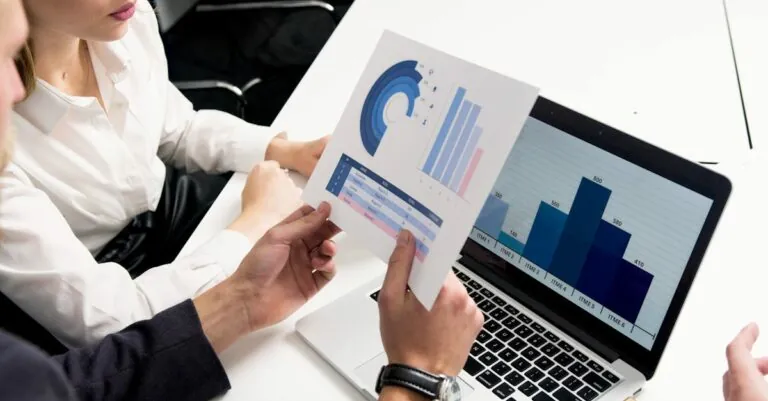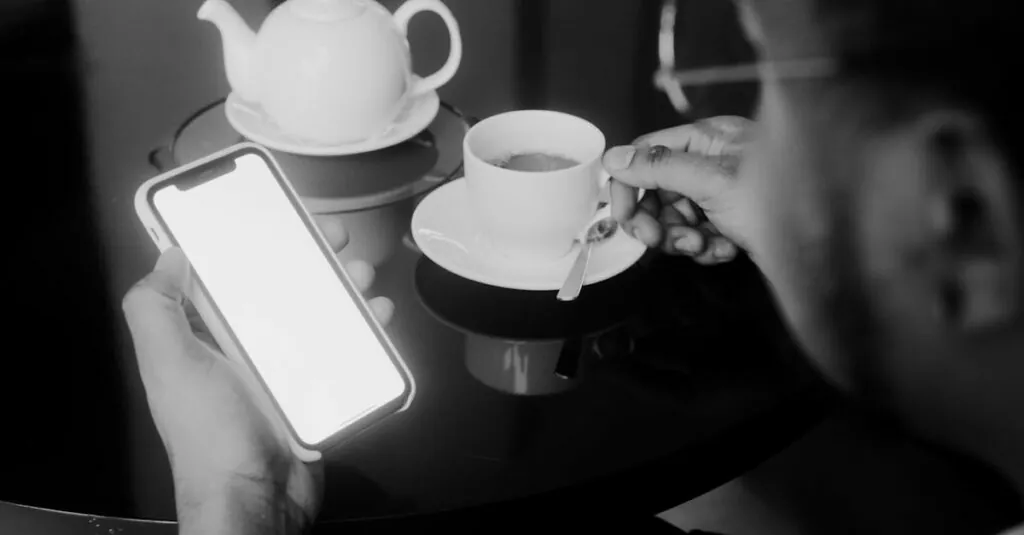Table of Contents
ToggleIn a world where chargers seem to multiply like rabbits, the question arises: can an Android charger power up an iPhone? It’s a dilemma that’s left many scratching their heads and frantically searching for that elusive Apple charger. While the thought of using a universal charger sounds like a dream, reality often throws a curveball.
Picture this: you’re at a friend’s house, your iPhone’s battery is gasping for life, and all you can find is a lonely Android charger. Should you take the plunge and plug it in, or risk a shocking surprise? The answer might surprise you and save you from a battery crisis. Let’s dive into the electrifying world of chargers and explore whether that Android lifeline can rescue your iPhone.
Understanding Charging Compatibility
Many people wonder whether they can use an Android charger to charge an iPhone. Understanding the differences between the two can help clarify this issue.
Android vs. iPhone Charging Technology
Android devices often utilize different charging technologies compared to iPhones. Most Android chargers give off standard power ratings, typically ranging from 5W to 30W. In contrast, iPhones, particularly newer models, support fast charging that can go up to 20W. This variance means that while an Android charger can physically fit into an iPhone, the charging speed might not match the iPhone’s capability. Devices may charge slowly but won’t get damaged when using an Android charger.
USB-C vs. Lightning Cables
Charging cables play a critical role in determining compatibility. USB-C cables are commonly used with many Android devices and some iPad models. iPhones, however, utilize Lightning cables to connect to power sources. USB-C connectors fit in both Android and newer iPads, while a Lightning connector exclusively works with iPhones. When using an Android charger for an iPhone, a USB-C to Lightning cable is necessary. Such a setup allows for effective charging even if the process may be slower compared to using the original Apple charger.
Benefits of Using an Android Charger for iPhone
Using an Android charger for an iPhone offers several advantages. Many find this option convenient in emergency situations.
Convenience and Availability
Android chargers widely exist in various settings, making them accessible when someone forgets their charger. They can commonly be found at friends’ homes or in offices. Users can easily borrow one without needing a specialized charger. Traveling away from home often presents unique challenges, but having a universal option simplifies charging. Quick access to Android chargers can help eliminate stress when battery levels run low.
Cost-Effectiveness
Using an Android charger proves to be budget-friendly. Many Android chargers cost less than official Apple chargers while still maintaining functionality. Significant savings occur when someone needs a backup charger without breaking the bank. Replacement costs are often lower for compatible charging accessories, offering users a wallet-friendly alternative. Opting for an Android charger reduces overall expenses while ensuring reliable charging options remain accessible.
Potential Risks and Considerations
Using an Android charger for an iPhone presents several key risks and considerations. Understanding these factors helps users make informed decisions about their charging practices.
Damage to Battery Life
Using an Android charger generally doesn’t cause immediate damage to the iPhone’s battery life. However, frequent use of non-Apple chargers introduces uncertainty regarding battery longevity. Quality varies among Android chargers, with lower-quality options potentially harming battery health over time. It’s essential to choose chargers from reputable brands, as poor-quality chargers may create overheating issues. These heat levels can negatively affect battery performance and lifespan. Users should monitor their device’s thermal behavior while charging with an Android charger to ensure it remains within safe limits.
Charging Speed Differences
Charging speeds differ significantly between Android and Apple devices. Android chargers typically deliver power ratings from 5W to 30W, while iPhones often support speeds up to 20W with compatible chargers. This discrepancy means that charging an iPhone with an Android charger results in slower charging times, particularly for newer models. Compatibility with fast charging features may also be lost, leading to longer waits for users needing quick power boosts. Those dependent on rapid charging should consider using an original Apple charger or a high-quality equivalent to ensure optimal performance. Understanding these speed differences aids users in managing their device’s energy needs effectively.
User Experiences and Testimonials
Various users have shared their experiences regarding using an Android charger for an iPhone. Feedback ranges from positive to negative, highlighting the practical implications of this charging scenario.
Positive Feedback
Many users appreciate the convenience of using an Android charger. They find themselves especially thankful in emergencies when an iPhone charger isn’t available. One user stated that finding an Android charger was a lifesaver while traveling. He noted that charging was slower but effective enough to keep his phone functioning. Others emphasize that the affordability of Android chargers, often costing less than Apple chargers, makes them an attractive alternative. Several users expressed satisfaction with the option of a backup charger, which alleviates the stress of low battery situations. It appears that, despite slower charging speeds, the flexibility these chargers provide greatly enhances user experience.
Negative Feedback
Some users report concerns about using an Android charger with an iPhone. Certain individuals experience diminished charging speeds, prompting frustration during critical moments. One user recounted an instance where her iPhone took significantly longer to charge with an Android charger, leading to inconvenience. Users also highlighted potential overheating risks associated with lower-quality chargers. A few noted a lack of compatibility with fast charging features when relying solely on Android chargers. Concerns about long-term battery health arose from frequent use of non-Apple products. These negative aspects may lead some users to consider investing in an original charger after their experiences with Android options.
Using an Android charger for an iPhone is a viable option in many situations. It offers convenience and accessibility when a dedicated iPhone charger isn’t available. While charging speeds may be slower and there are potential risks with lower-quality chargers, the overall experience can still be satisfactory for occasional use.
Users should prioritize reputable brands and monitor their device’s performance during charging. For those who need faster charging or want to maintain optimal battery health, sticking with an official Apple charger or a high-quality alternative is recommended. Ultimately, understanding the trade-offs can help users make informed choices about their charging needs.







